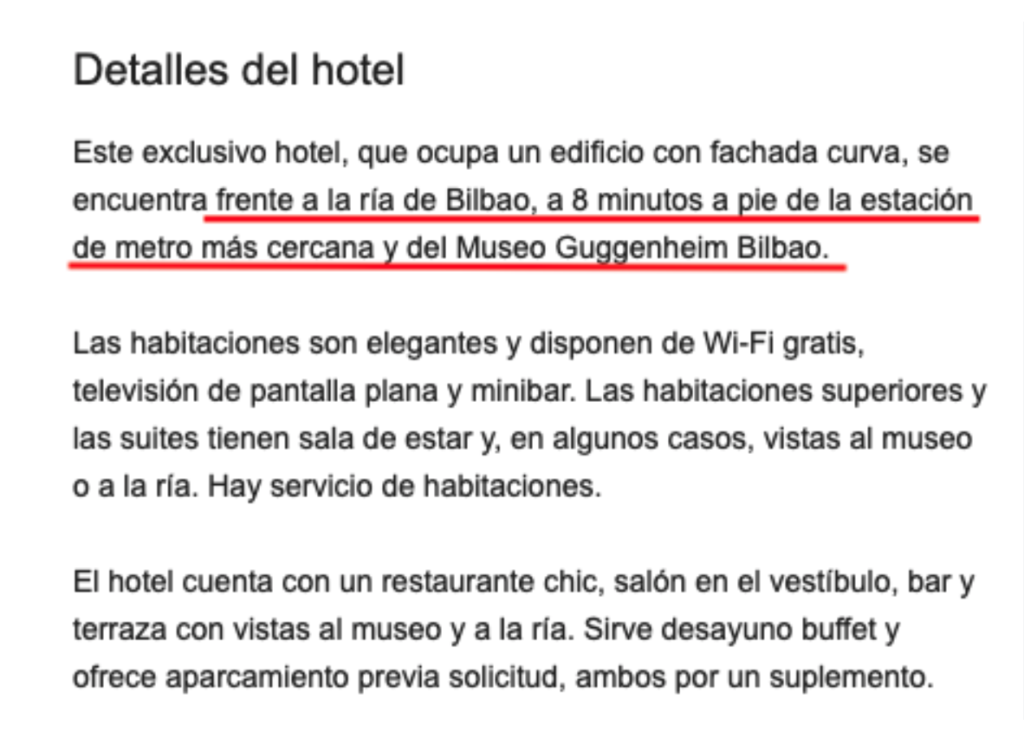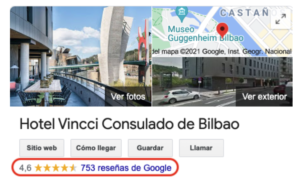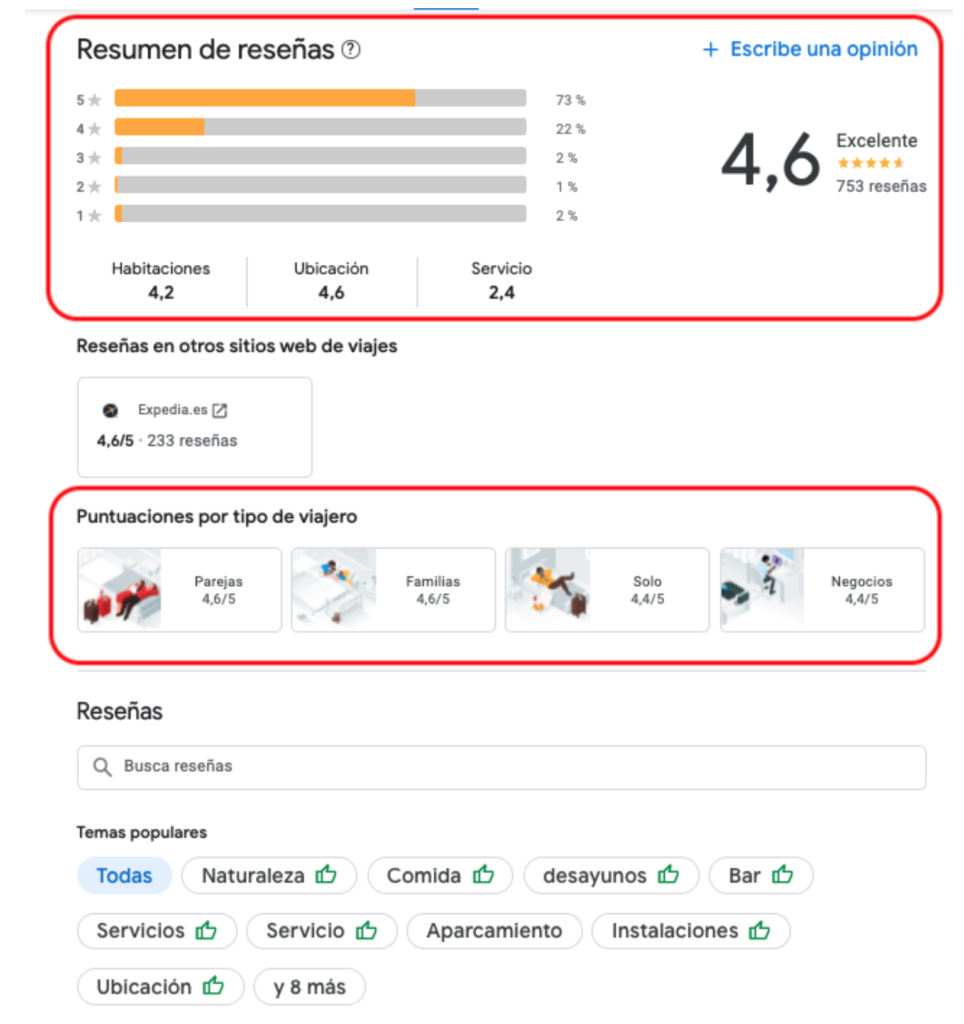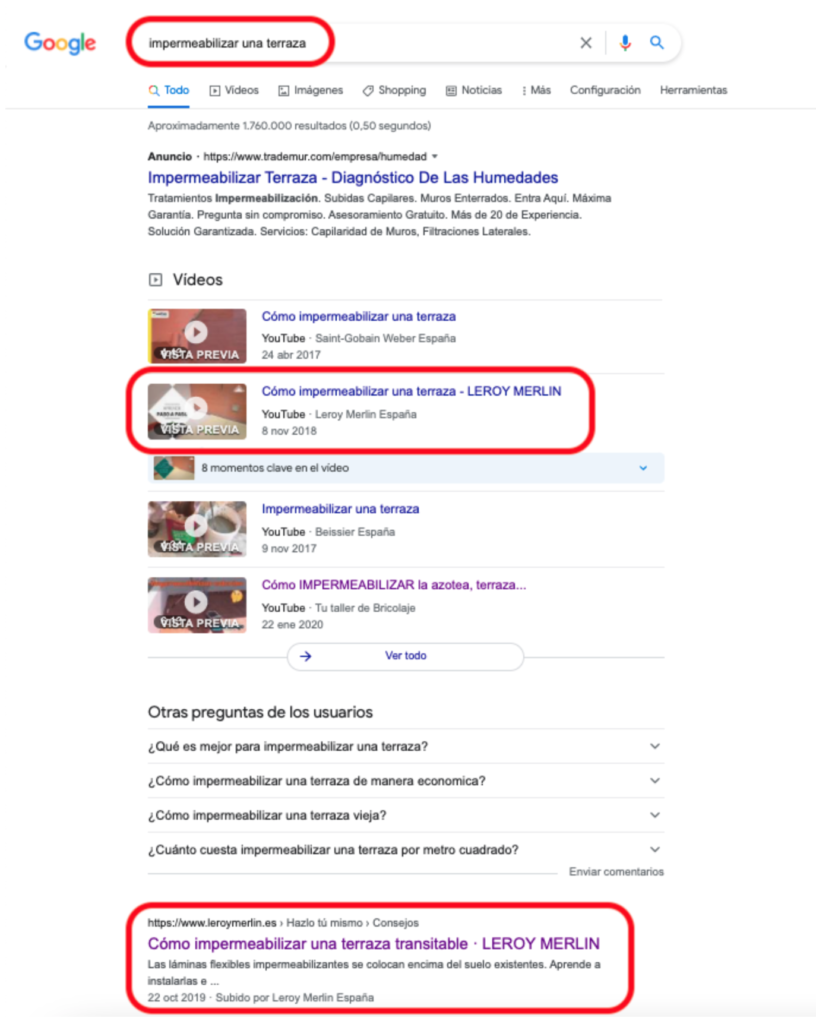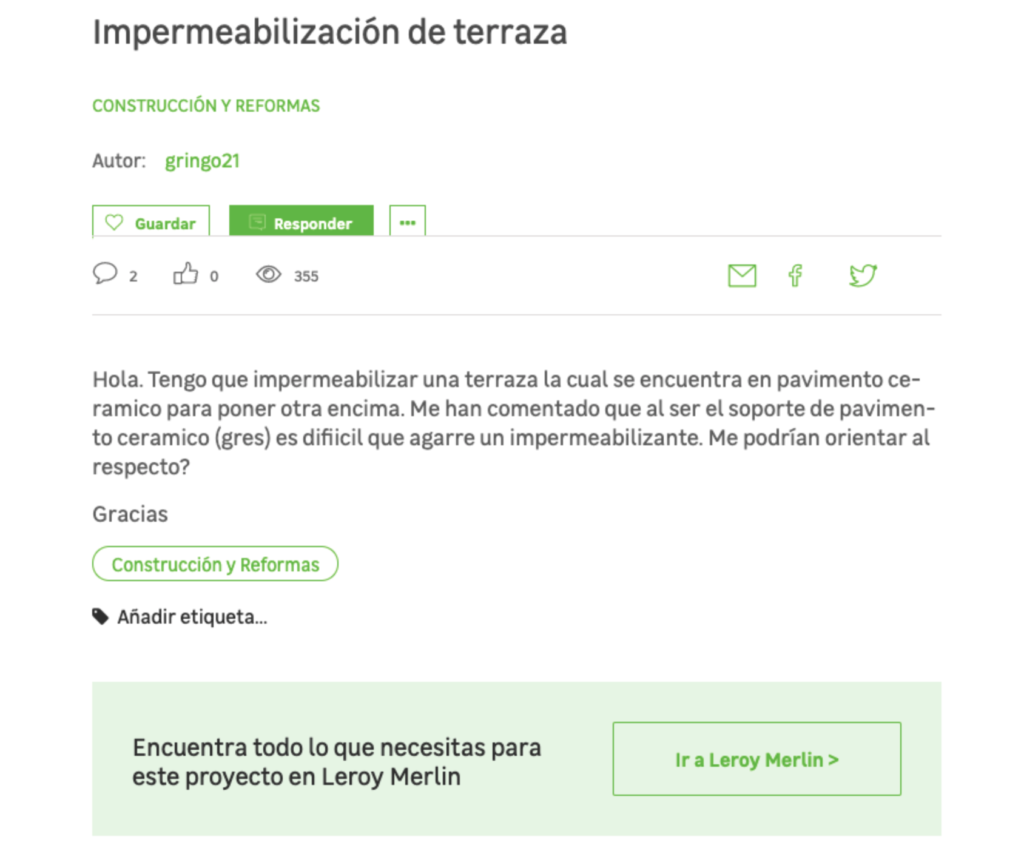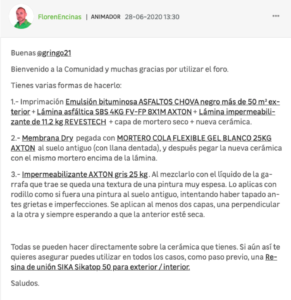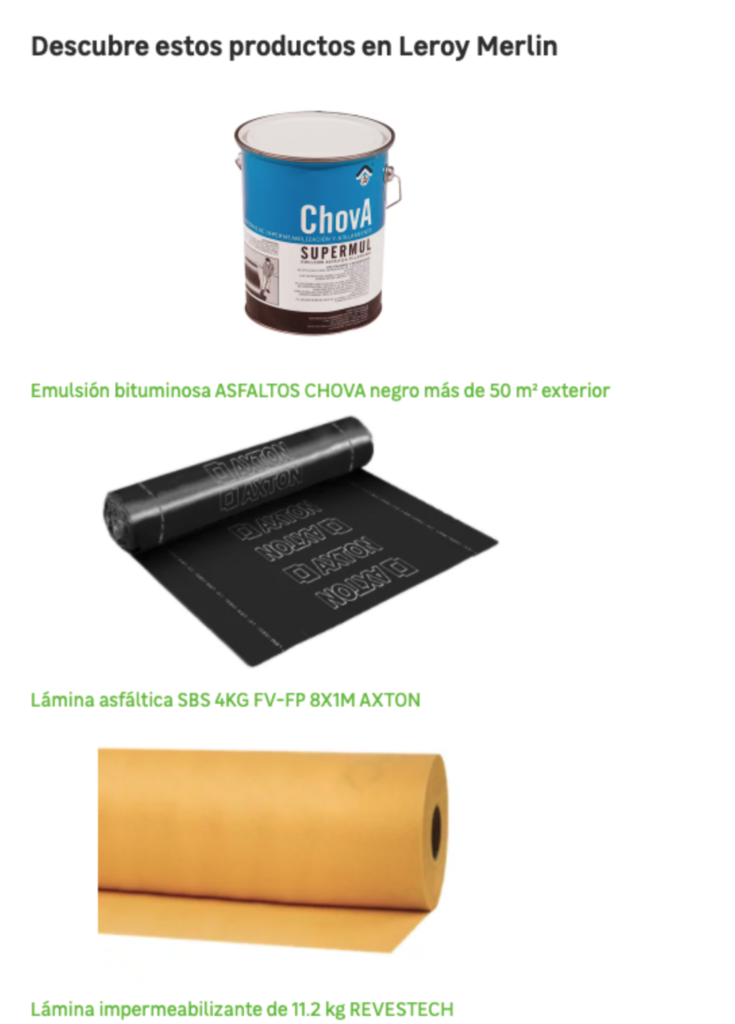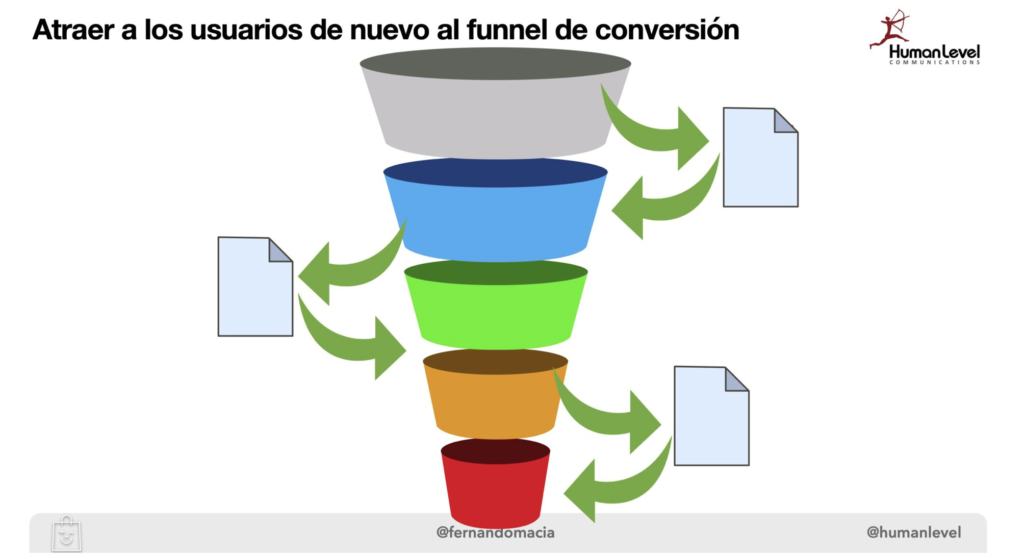Written by Alicia Rodríguez Ruiz
Index
JIT (Just In Time) content is inspired by the concept coined by Toyota to refer to those pieces of content that, anticipating users’ doubts, are strategically created and linked to facilitate their purchase decision process.
The process starts with the correct modeling of our buyer persona and its customer journey. That is, what is our ideal potential customer like, what are his main motivations for buying and his main objections, and how does this decision process translate into concrete searches from the moment he begins his research of the different options until he confirms the purchase.
Let’s take an example to see it better.
Imagine you are looking for a hotel in Bilbao for a getaway. Quite certainly, and even before you arrive, you will also want to know how to get from the hotel to other points of interest in the Village, the distance that separates them and the means of public transportation available for those trips.
A traditional content approach would offer you information about the hotel’s location, room characteristics, availability on the scheduled dates, price and additional services. A JIT content approach would also offer you information about these points of interest, means of transportation, the agenda of cultural activities in progress or even the weather forecast.
You have not asked for this information, but it is easy to foresee that it will be useful to you and it is put on a platter.
In the following image, and following the example of the aforementioned hotel, we can clearly see the above.
In this sample of “just in time” content you can see how this website offers the user useful information strategically linked and just when they are most likely to require it. Indeed, another of the maxims imported from the Just In Time philosophy is to eliminate waste. Translated into content marketing, this means eliminating unnecessary information to avoid noise.
Why Just In Time content?
The concept of Just In Time content aligns with users’ growing desire for greater autonomy to make informed purchasing decisions and their increasing rejection of “advertising” content, which they perceive as clearly biased.
Traditionally, brands have led the way in providing information, in many cases offering an image with a great layer of makeup to show an idealized version of their products and services.
Now, however, it is the user who takes the lead and flees in many cases from corporate messages that make him/her suspicious about the intentionality and credibility of the brand behind the message.
Where and how to use JIT content?
A clear example is the power of reviews and comments not only in judging what brands offer, but also as a catalyst for ideas for future value-laden content.
In the following three images we see it sequentially and graphically.
In this first screenshot, we can see that the hotel’s review score is not bad at all: a rating of 4.6 out of 5 confirms it.
And in this second image we see how the scores of the previous reviews are distributed according to the differentiated needs of different market segments. Logically, a family (4.6 points out of 5) does not require the same information and therefore the same services as a person traveling alone (4.4 points out of 5).
But the sample of information most similar to the JIT concept can be found in the following image, and it seems to go unnoticed by the brand we are analyzing:
Having this gift of a review published and visible to everyone, how is it possible that the hotel does not respond with information about its available charging points for electric cars?
A Just In Time content marketing strategy would have taken advantage of this problem/opportunity, especially when, as pointed out in the review itself, the city does not offer enough charging points and a hotel with this service can unseat its competitors by simply covering this need that it does not even have to implement from scratch.
At this point, it is important to refer to quality, which obviously also affects reviews, comments and responses.
If by quality content we mean content that provides a differentiating value to the audience in the form of a solution to their problems, active listening from all fronts (in this case from the reviews) is extremely important as source of information on possible JIT content that the brand has to create.
In this way, we manage to be visible and findable by creating awareness of a need that the user was unaware of or a problem not contemplated: the scarcity of charging points for their electric car.
But it also allows us to compete in intermediate stages when users are already aware of it and are looking for extra and different solutions: finding a hotel where they can charge the car’s electric battery.
What’s more, a JIT content talking about the offer of electric charging points would even capture the attention of the final stages of the consumer journey of this hotel, those where loyalty is the protagonist.
The idea is that as a consumer who knows this service from previous times you can consider the following: “If I go to the city and I already know in advance that in this accommodation I am going to have that service with which I am totally comfortable, why am I going to waste time looking at other hotels?”.
Examples of JIT content
Let’s remember an important concept: the two main impulses that lead the user to make a search are given by what motivates or worries them regarding their imminent purchase decision.
That said, let’s take the search “waterproof a terrace” as an example and analyze how Leroy Merlin applies the JIT content philosophy to respond to this need.
To do so, we will eventually reach their community-focused page: https://comunidad.leroymerlin.es/.
But first, let’s make a small stop at the following gif where the search “waterproof a terrace” offers two results precisely from Leroy Merlin with video content and first organic position that respond to an even more specific and refined user search intent: “How to waterproof a terrace?”.
Here, the user’s interest is focused on “how” he can waterproof his terrace, with other questions such as “prices for waterproofing a terrace” or “different materials for waterproofing a terrace” being secondary aspects.
In the article in position 1 for this search, Leroy Merlin includes a video tutorial next to the article step by step showing how to perform this type of reform. Content, as we can see, is perfectly aligned and in harmony with the search intent.
So that you don’t miss a single detail, we show it in a sequence of images, whose origin is a question from a user.
Below is the response of a community/forum animator created by Leroy Merlin.
And to close the cycle comes a “suggestion” of products related to the customer’s search and that closes the process pointing directly towards conversion.
All three parts of the process are natural, aligned with user interest and far removed from advertising strategy. They start with a question, continue with the technical answer (differentiating value) and end with a note of the materials that, in a natural and non-commercially aggressive way, lead you to make the purchase.
JIT content process successfully completed!
Benefits of Just In Time content marketing
So what are the main benefits of the Just In Time concept applied to content marketing?
- Generation of quality visits and attraction of qualified traffic: Because the user’s search intention fully coincides with the information offered in the content.
- Increased brand visibility against competitors. With a proper SEO strategy and implementation and thanks to suitable keywords, it generates useful and relevant content that Google positions in visible positions where users can easily find them. Again, the case of Leroy Merlin with its first position in organic and its presence in the results of video content is useful.
- Content to assist the user in making decisions throughout the purchase process. As we can see in the three steps in images of Leroy Merlin shown previously.
- Content focused on conversion and not only on attracting visitors. Its ultimate goal goes further and leads the user by the hand to conversion. In the example of Leroy Merlin we saw how, starting from a user’s doubt, a list of products to be purchased was displayed.
- Conversion funnel output corrector system. Thanks to the applied techniques of JIT content marketing where we anticipate the information required at each stage of navigation, we avoid abandonment and encourage the return to the buying process. This helps to detect potential leakage points, minimize them and redirect users from informational content back to transactional pages.
- Content visible to customers even when they are not looking for us directly. Identifying anticipatory or related searches that reveal a need whose solution may be unknown to the user.
- Creator of a great resonance in social networks and natural link booster of other websites. By avoiding the generalized noise of content that does not offer value, it manages to stand out on the Social Media level not only as a content for consultation, but referencing the website as reference and opinion leader of the subject matter.
- Identify those searches where the competition is not yet present. And it also detects where there is the possibility of creating content of higher quality than that already published by competitors.
- Early detector of searches that the user needs to answer before making a purchase decision. The case of the hotel also serves as a reference here.
- Generator of optimal and interrelated content types that drive visits to transactional pages. For example, Google My Business tabs linked to the website and to the contact or product page.
- Integrator of content marketing not as isolated sections, but as an integral part of the website’s information architecture to present all possible content-just-in-time alternatives and drive the outputs back into the conversion funnel. The example of Leroy Merlin is useful again: community pages or forums with internal links or references to services or products of the brand.
Creating JIT content requires strategic planning where SEO and content marketing work in synergy. If your company needs help with this type of service do not hesitate to contact us and we will send you our best offer.
